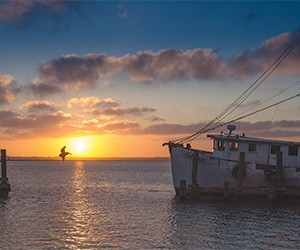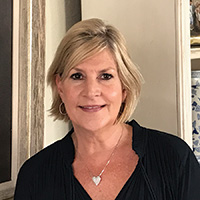Want to mix history with a productive meeting or unforgettable event? Northeast Florida, a.k.a. the First Coast—the area from the Georgia border to Daytona Beach—is the place. Whether visiting Amelia Island in the north or further south at Flagler Beach, named for oil and railroad tycoon Henry Flagler, groups will not only experience some of the most pristine beaches in the country, attendees will find unforgettable venues that have endured in all their historical glory.
Jacksonville
Groups heading to Jacksonville, the “River City by the Sea”, can experience such historic venues as Fort Caroline, dating to the 1500s when the first French explorers met the Timucuan Indians at the mouth of the River May. Other options include The Florida Theatre, the Casa Marina Hotel in Jacksonville Beach or even the Prime F. Osborn III Convention Center, which was once a train station and later remodeled into a state-of–the-art meeting venue.
“The Prime was once the city’s main train station with visitors traveling to and from all over the East Coast,” said Patty Jimenez, leisure communications specialist for Visit Jacksonville. “The original ticket box and some of the original trains are still there for current users to enjoy and discover our city’s history.
“Visitors can truly experience the ‘Old Florida’ while meeting here,” she added. “From our beautiful historic venues through unique history tours of our downtown, and while visiting our museums, the city’s history is very much alive in Jax.”
One of those museums is in the historic Riverside section of Jacksonville, just two miles southwest of downtown. The Cummer Museum of Art & Gardens is a sprawling English Tudor Revival house overlooking the St. John’s River that was once the home of Ninah Cummer and her lumber baron husband Arthur.
Ninah developed the sprawling gardens with the help of the Olmsted Brothers firm, known mostly for their work on New York’s Central Park. Today, the group-friendly gardens include reflecting pools, fountains and sculptures and are listed in the National Register of Historic Places.
Marci Larson, co-chair for the Sons of Norway convention, used the Cummer in 2014 for a president’s reception.
“Everything went extraordinarily well,” she said. “It showcased Jacksonville as an art appreciation city.”
St. Augustine
America’s oldest continually occupied city, St. Augustine is a bustling tourist town where t-shirt and gift shops stand near century-old structures like the massive 1600s Castillo de San Marcos, the oldest masonry fort in the continental U.S.
In August, a group of 40 attorneys had the chance to experience St. Augustine’s history while staying at the beautiful Casa Monica Resort & Spa. Built in 1887, the Casa Monica is now part of Marriott’s Autograph Collection.
“This was not a typical Marriott,” said Andrea Oyola Reid, Esq., chair of the event for the Family Law Section of the Florida Bar Association.
“I think the charm of the hotel and its historic location changed the whole ambience of the meeting,” she said. “It’s a smaller, more intimate hotel and our theme was ‘Bringing People Together,’ so it was perfect for our group. The opening night reception around the small pool was lovely and the lobby bar was cozy.”
One afternoon after meetings, the group did an Amazing Race-type activity hitting many of the historic venues in the area.
“The city lent itself to this activity,” she said. “The Lightner Museum is across the street, Flagler College is nearby and the group had all of Old Town St. Augustine to explore. And we never had to worry about transportation; you can walk everywhere.”
Paul Daum from local DMC Corporate1 Events coordinates a similar activity for groups: The Amazing Taste St. Augustine, where the group is tasked with finding certain historical venues while sampling local eats.
Provided with clues, participants are lead to such places as the Lightner Museum, showcasing the wonderful art collection of Otto Lightner; Flagler College—the former Ponce De Leon hotel, now a college building; and the St. Augustine Distillery, formerly The St. Augustine Ice Plant, dating back to 1905.
PageBreak
“The Amazing Taste St. Augustine is one of the most unique ways to experience the best of St. Augustine from a historical perspective with wonderful local food and beverages. We simply marry the two,” Daum said.
Originally built in 1888 as an entertainment center for the luxurious Ponce de Leon Hotel, the Lightner Museum stands across the street from Casa Monica. Around the beginning of the 20th century the Lightner housed the world’s largest swimming pool. Now drained, the former pool area and mezzanine is well suited for sit-down dinners, receptions and dancing for up to 400 guests. The outdoor terrace, the Grand Ballroom Gallery and the restored library are also used for special events.
“This is one of my favorite go-tos,” said Barbara Golden, communications manager, St. Augustine, Ponte Vedra & The Beaches Visitors and Convention Bureau. “And in fall 2017, they’re having an exhibit of Downton Abbey costumes in the museum.”
Golden added that downtown’s the Treasury on The Plaza, which opened as the area’s central bank in 1927, is now a space for events.
Groups will find the largest combination of hotel and convention center space in the region at the World Golf Village Renaissance St. Augustine Resort, with over 60,000 square feet of indoor and outdoor venue options.
Amelia Island
Amelia Island is unique in that it is the only place in the U.S. to have been under the domain of eight different flags: French, Spanish, British, American Patriots, Green Cross of Florida, Confederate, U.S. and the Mexican Revolutionary Flag. Hearkening part of that historic past, Fort Clinch brings visitors back to 1864 as soldiers reenact life during the Civil War.
“Fort Clinch State Park is a great historical venue for potential meeting planners to consider on Amelia Island,” said Amy Lacroix, director of marketing for the Amelia Island CVB. “We often have groups looking for something off-site when they have a meeting at the Omni Amelia Island Plantation or The Ritz-Carlton, Amelia Island. Not only do attendees get the beautiful natural setting of the park with its live oak tree-canopied roads, access to the beach and the sunsets over the Amelia River, events can be held within the fort itself for a great historical setting.”
Groups can also host tented dinners inside the fort walls and enjoy live reenactors in authentic costumes who bring the history of the fort to life, according to Lacroix. On the first weekend of every month, the park holds a garrison of soldiers who demonstrate skills such as carpentry, blacksmithing and cannon firing.
Other Amelia Island options include exploring the historic Fernandina Beach area and visiting the Amelia Island Museum of History.
Palm Coast and the Flagler Beaches
Matthew Dunn, executive director of Palm Coast and the Flagler Beaches, said Princess Place Preserve is one of the most unique venues in the area, located in a picturesque spot along Florida’s Intracoastal Waterway.
Henry Cutting purchased the sprawling 1,500-acre preserve in 1886 and passed it on to his widow Angela Mills Cutting Worden. Worden later married exiled Russian Prince Boris Scherbatoff and assumed the title of princess, inspiring what was once named “Cherokee Grove” to become known as “Princess Place.” Henry Cutting’s original lodge still stands as Flagler County’s oldest intact structure.
“Anytime European royalty came to Florida, Princess Place Preserve is where they stopped first,” Dunn said. “The property has all its original structures and the home and horse stables were recently restored. The county, which now owns the property, is also restoring one of the buildings to be used specifically for meetings.”







